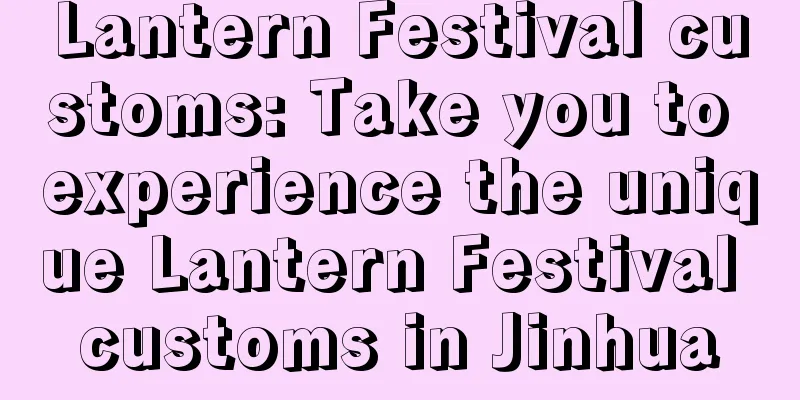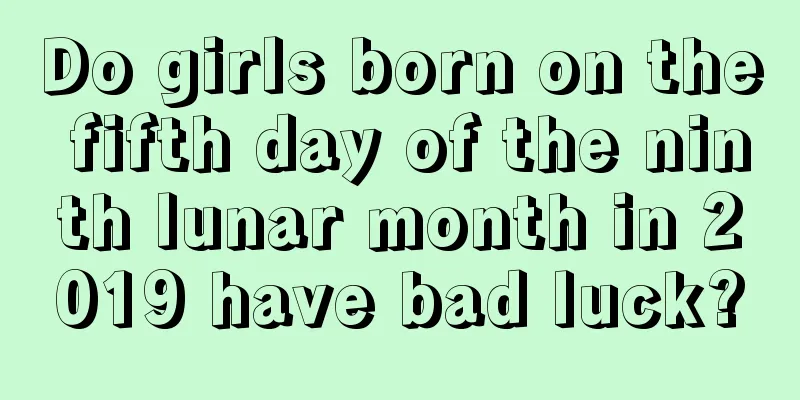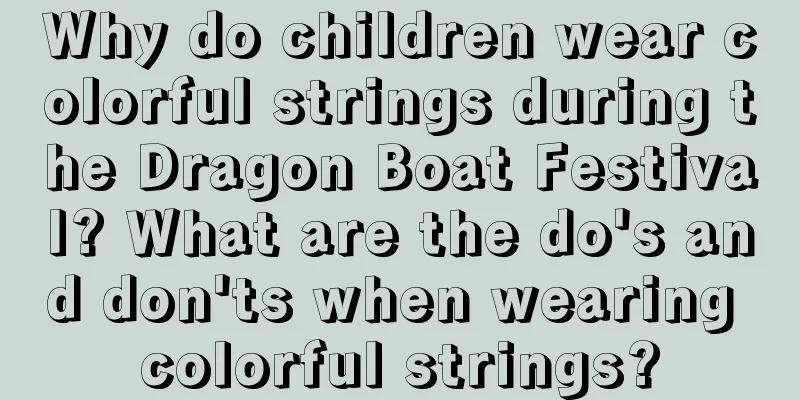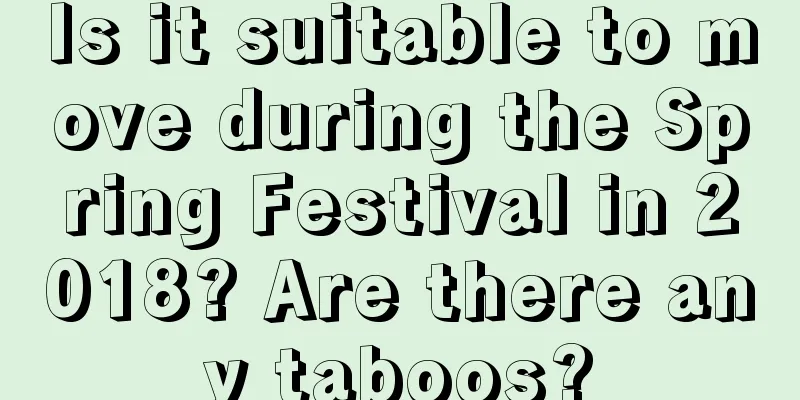Lantern Festival customs: Take you to experience the unique Lantern Festival customs in Jinhua

Introduction: Our country is vast and rich in resources, and its folk culture is very rich, so customs vary from place to place. The Lantern Festival is one of our country's traditional folk festivals, and the customs in different places are different. In this issue, the editor will take you to experience the Lantern Festival customs in Jinhua area. The first month of the lunar calendar is about to begin with various festivals. Let us count the important traditional festivals and customs of this month. A good year starts with spring.Lantern FestivalOn the eve of the Lantern Festival, the lights in the lobby of Suyong Hall in the Luzhai ancient building complex in Dongyang City attracted many tourists to stop and watch. During the Lantern Festival in every leap year of the lunar calendar, Suyong Hall would hang up lanterns in the lobby. This year's set of headlights is 4.05 meters high, 2.10 meters in diameter and weighs 122.5 kilograms. There are three headlights made of sheepskin, silk and sheep horns connected in the middle. There are 6 strings of 24 small sheep horn lights and bead basket lights hanging on the outside, with a total of 400,000 colored glass beads.The custom of lighting lanterns during the Lantern Festival began in the Han Dynasty. Emperor Ming of Han promoted Buddhism and ordered the lighting of lamps on the evening of the fifteenth day of the first lunar month to show respect for the gods and Buddhas. Thus began the custom of lighting lanterns during the Lantern Festival. By the Tang Dynasty, the lighting of lanterns on the Lantern Festival had developed into an unprecedented lantern fair. In Chang'an, "a lantern wheel was built twenty feet high, covered with brocade and decorated with gold and silver, with fifty thousand lanterns lit, clustered like flower trees." Emperor Minghuang of the Tang Dynasty, Li Longji, once commissioned the construction of a lantern tower that was 150 feet high. Pearls, jade, gold and silver pendants were hung on the lantern tower, and the wind blew the gold and jade, making a clanging sound. After the Song Dynasty, the Lantern Festival became even more lively. The time for lighting lanterns during the Lantern Festival started from the Han Dynasty, which was limited to one night. Emperor Xuanzong of Tang stipulated that it should be lit for three nights. In the Northern Song Dynasty, it was extended to five nights. During the Ming Dynasty, during the reign of Zhu Yuanzhang, it was stipulated that the lanterns should be lit from the night of the eighth day of the first lunar month to the night of the seventeenth day. Juggling skills appeared during lantern lighting in the Tang Dynasty, lantern riddles appeared in the Song Dynasty, and opera performances were added in the Ming Dynasty. Nowadays, there are still many places in Jinhua with lanterns. The lanterns are of various varieties and colors. Some lanterns are still traditional styles, like portable lanterns that still use candles, while others use electric lamps for lighting. Eat YuanxiaoThe custom of eating Yuanxiao during the Lantern Festival began in the Song Dynasty. The Song Dynasty book "Pingyuan Xugao" records: "Floating dumplings are cooked for the Lantern Festival. The predecessors seem to have never written about this..." According to "Wulin Jiushi" by Zhou Mi of the Song Dynasty, "The favorite diets for festivals are lactose dumplings, clear sand dumplings... and ten kinds of sugar." This kind of "sugar dumplings" and "floating dumplings" were made for the festival and later renamed "Lantern Festival." Eating Yuanxiao during the Lantern Festival is intended to wish for family reunion and harmony, and to express wishes for health and happiness in the new year.There are two types of Yuanxiao based on the production method: one is solid and has no fillings; the other is filled with fillings, which come in five flavors: fragrant, spicy, sweet, sour, and salty. Yuanxiao can be eaten with soup, fried, boiled or steamed. The flavors of Yuanxiao include meat, vegetarian, sweet, salty, sour and spicy. As time goes by, Yuanxiao has gone beyond being a seasonal food and become a snack available in all seasons. Many new varieties have been added and the flavors are even richer. Guess lantern riddlesAround the Lantern Festival, many units in our city will hold lantern riddle guessing activities. Guessing lantern riddles has a long tradition in our country. It originated from folk riddles, and later became riddles after being processed by literati, including lantern riddles, object riddles, children's riddles, and fill-in-the-blank riddles.Riddles also went through a development process. As early as the Spring and Autumn Period and the Warring States Period, some politicians often used metaphors like telling folk stories in their speeches in order to publicize their own ideas and persuade monarchs of various countries. They made clever allusions and implied profound meanings in order to achieve the desired effect. At that time, this method was called "secret language" or "hidden words", which was the initial stage of written creation of riddles. After the Qin and Han Dynasties, riddles became a form of written creation. In the Southern Song Dynasty, riddles became a unique form of game during the Lantern Festival. People tie riddles on colorful lanterns for others to guess, which are called "lantern riddles." Nowadays, guessing riddles has become a unique cultural and artistic activity in our country with rich national characteristics. Welcoming the Dragon LanternThe dragon lantern festival can be found in many places in Jinhua, and has become more and more popular in recent years. In the past two days, Pujiang, Yiwu, Pan'an, Jindong and many other places held dragon lantern welcoming activities. For example, in Jingwu Village, Baima Town, Pujiang County, people danced with bench dragons in the village square. On that day, there were three bench dragons celebrating the Lantern Festival in the village. Carrying stools and dancing the dragon on the Lantern Festival is a major New Year event for local farmers.The dragon lanterns in Jinhua are mostly bench dragons, also known as long lanterns, which consist of three parts: the dragon head, the dragon body and the dragon tail. From beginning to end, a dragon is made up of dozens, hundreds or even thousands of benches connected in series, and its length ranges from hundreds of meters to several thousand meters. In 2006, Pujiang Bandeng Dragon was listed as the first batch of national intangible cultural heritage by the Ministry of Culture. Summary: Through the above article, I believe everyone has a certain understanding of Jinhua’s Lantern Festival customs. I hope you will like it. I wish you all smooth sailing and all the best in the new year! After reading this article, there are more exciting contents in the special topic of the first month of the lunar calendar. Let’s take a look! |
Recommend
Is it a good time to pray on August 27, 2020? What will the hexagram look like on October 13?
Introduction: It is necessary to choose an auspici...
Is April 25th of the lunar calendar in 2018 a suitable date to burn incense and pray?
Introduction: In our country's tradition, burn...
Is April Fool's Day, April 1, 2019, suitable for visiting ancestor graves?
Is April Fool's Day, April 1, 2019, suitable f...
What are the commonly used orientation methods of the compass in residential Feng Shui?
Introduction: Compass is an important tool for mea...
What are some auspicious references for names for baby girls who lack fire and are born on the Ghost Festival in 2021?
A good name can bring different fortunes, so every...
Where is the God of Wealth on the 17th day of the 11th lunar month in 2017?
In the eleventh month of the lunar calendar, whet...
Analysis of the lunar calendar for December 17, 2019, and date query!
The auspicious and inauspicious events, do's ...
Is the tenth day of August 2020 a suitable day to sign a contract? Check the auspicious position of the God of Happiness on September 26!
Introduction: Generally, it is necessary to choose...
Zodiac sign of a child born on June 21st of the lunar calendar in 2021, is it a Leo?
Constellations can be divided into twelve constell...
Can we start work on June 24th of the lunar calendar in 2022? What to prepare for the groundbreaking ceremony?
The sixth month in the lunar calendar is the trans...
What is the auspicious time on the 14th day of the first lunar month in 2018? Check the auspicious and unlucky time
1. What day is the 14th day of the first lunar mo...
What should we do and what should we avoid doing on the 12th day of the seventh lunar month in 2019?
The lunar calendar is a time calculation method i...
What date is November 30th in the lunar calendar 2018? What day is it?
There are good and bad days, and this happens rep...
List of auspicious days for ancestor worship in the twelfth month of the lunar calendar in 2019!
Introduction: It is also necessary to choose an au...
Is it not suitable to decorate the second day of the winter solstice in 2020? Check the schedule of the 49th day of the 2021 winter solstice
Introduction: It is generally necessary to choose ...









